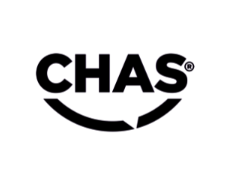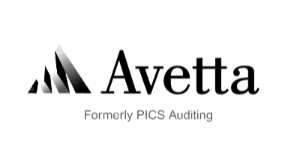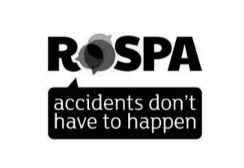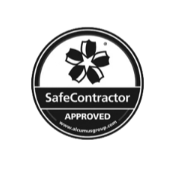Children and mess. The two invariably go hand in grubby hand. It’s no surprise therefore that schools, where youngsters congregate in their hundreds or thousands, can easily become a massive breeding ground for dirt and germs.
School cleaning, while always high on the list of operational considerations since the year dot, has come increasingly under the spotlight in recent times.
Infectious bugs that were usually a seasonal or random menace for primary and secondary schools took on a whole new meaning with the arrival of Covid-19 and its devastating implications for both pupil and staff absences, and detrimental consequences for learning.
Never before has the issue of cleaning in schools been more important, but busy staff don’t always have enough hours in the day or the right equipment for that matter.
Here at the phs Group, we understand the logistical challenges and budget constraints schools face, so there’s no need to worry – we have all the professional environment cleaning solutions you’ll need.
We provide affordable and convenient hygiene solutions and education cleaning services to more than 24,000 education establishments, and can help you create a safe and healthy learning environment that’s suitable for your students and employees.
So, what are some of the common health hazards pupils and staff have to navigate each day? Let’s start by identifying some of the key areas of a school, in addition to the obvious toilets and washrooms, where the bug baddies hang out.
Classroom
School desks have been found to have all manner of fungi and bacteria lurking over their surfaces, including nasties from faecal matter, which can cause very unpleasant tummy upsets.
In fact, research has shown that the average desk has 400 times more germs than a toilet seat. Yuk! Shared equipment, like pens, pencils, crayons, sharpeners and books are also conduits for spreading infections.
Computer room
The average office computer keyboard can harbour more than 3000 bacteria per square inch, so you can bet that a school computer keyboard, mouse or touchscreen shared by hundreds of pupils will be crawling with a gazillion germs.
And then, after touching these shared pieces of equipment, youngsters scroll through their personal smart phones, spreading undesirables to their own gadgets.
While most bacteria on keyboards are harmless, it only takes a cut on a finger or eating without washing your hands first for a bug to unleash its damage.
Gym hall
You want your pupils to exercise and it’s an essential part of the curriculum, but gymnasiums provide the perfect haven for germs.
Gym floors and mats in particular present a hazard with children often going barefoot for their PE lesson, giving rise to skin infections like athlete’s foot. Equipment like bats and racquets also present a risk when swapping between multiple sweaty hands.
Air quality
For a long time, the outdoor air quality around schools has been a cause for concern due to rising traffic levels and pollution. But more recently, indoor pollution has made the headlines with links to poor concentration levels and test results. Worries about air quality inside classrooms have been further exacerbated by the Covid pandemic.
While the Government has advocated opening windows to ventilate school spaces and improve air quality, that is often not practical and can make pupils’ learning environment cold and uncomfortable.
So, what do schools need to do to ensure classrooms, corridors and other communal areas remain safe and hygienic all year round? We look at some of the ways you can cut down on illnesses like colds, flu, respiratory bugs, diarrhoea and norovirus.
Good personal hygiene
It starts with teaching children – and reminding staff – what constitutes good hygiene on a regular basis, and providing the necessary hand cleaning consumables and equipment, such as soap, anti-bacterial handwashes and efficient hand dryers.
Washing hands regularly with soap and water, and coughing and sneezing into a disposable tissue or the inside of your elbow are simple habits that go a long way in reducing the spread of germs. Also make high-risk contamination areas like computer rooms no-food zones.
Cleaning rota
Draw up a weekly cleaning rota or schedule to ensure that all areas of the school receive proper attention on a regular basis and tasks are completed on time. Incorporate plans for a deep clean to tackle hotspots and be prepared for cleaning spills and bodily fluids randomly as and when required.
A good school gym cleaning rota example would involve airing and cleaning any removal gym mats, cleaning the gym equipment, wiping down all surfaces and mopping the floor with superior cleaning and disinfectant products.
It’s worth checking the colour coded guidelines for school cleaning produced by the British Institute of Cleaning Science, the UK’s largest professional and educational body within the cleaning industry, aimed at reducing the risk of cross-contamination from one cleaning surface or area to another.
All equipment, including cloths and mops, should be disinfected with a suitable product after each use and air dried.
High contact areas
At the end of the day or between classes, regularly disinfect high-contact surfaces like chairs, desks, door handles and light switches, and provide cleaning wipes for electronics. Encourage pupils to clean items like iPads and their own smart phones.
Students who congregate in areas with high footfall such as assembly areas and locker zones may be prone to picking up germs from the floor or when they collect their belongings. Ensure floors are cleaned regularly and provide plenty of hand sanitisers in visible areas, classroom entrances and touchpoints so that students can contribute to efforts to keep the school bug-free.
In toilets and washrooms, scrupulous cleaning and disinfection and safe sanitation disposal is crucial to keep infections at bay.
Clear the air
Air care is crucial in reducing viruses like coronavirus which spreads through air particles.
Covid is more contagious in indoor environments where ventilation is poor. Growing evidence shows that infected aerosols (or airborne droplets) can linger in the air for hours at a time, and while opening windows as per government guidance can help, there are more efficient ways to reduce the contagion.
For instance, phs’s AERAMAX Pro air purifiers are effective against Covid, eliminating 99.99 per cent of coronavirus particles, as well as a range of infectious diseases that spread easily in schools, including colds, flu, norovirus, chickenpox, measles and mumps, along with TB, SARS and whooping cough.
In the post-Covid era, how clean our schools are and the best ways to tackle germs is a topic that’s likely to remain under the microscope for some time to come.

































